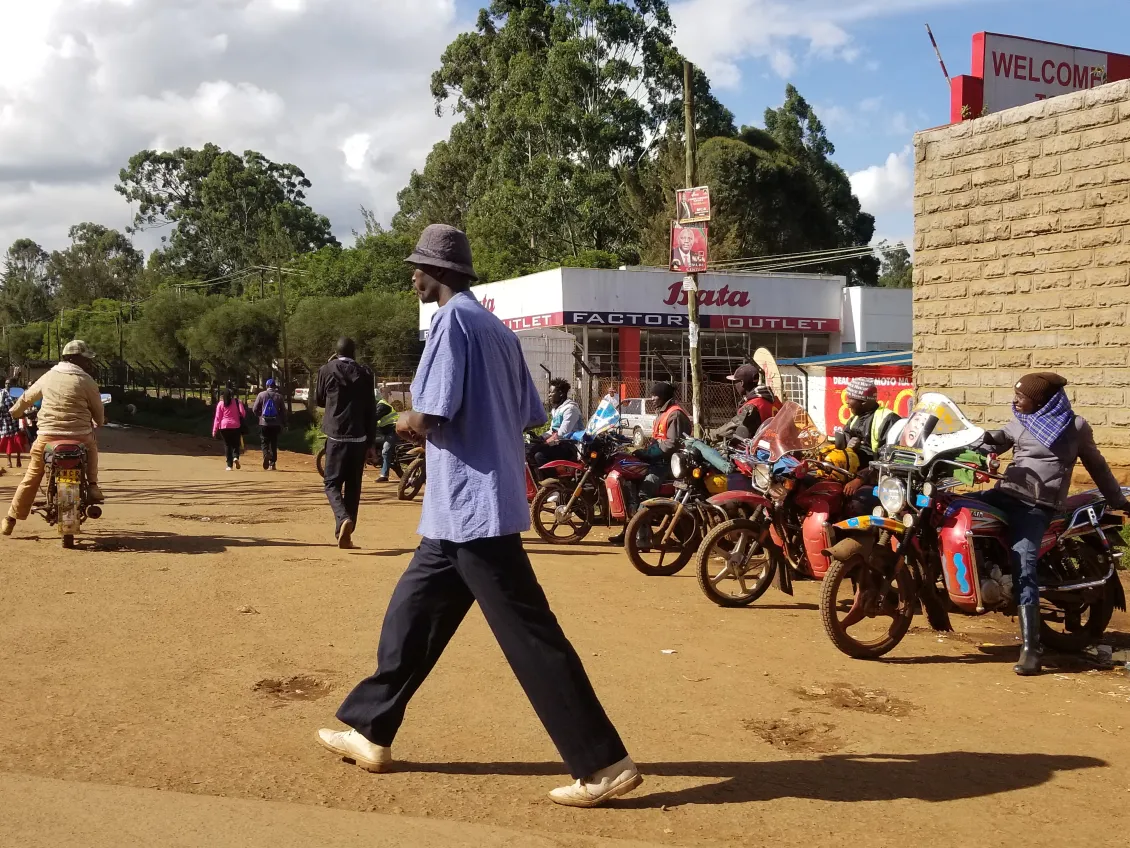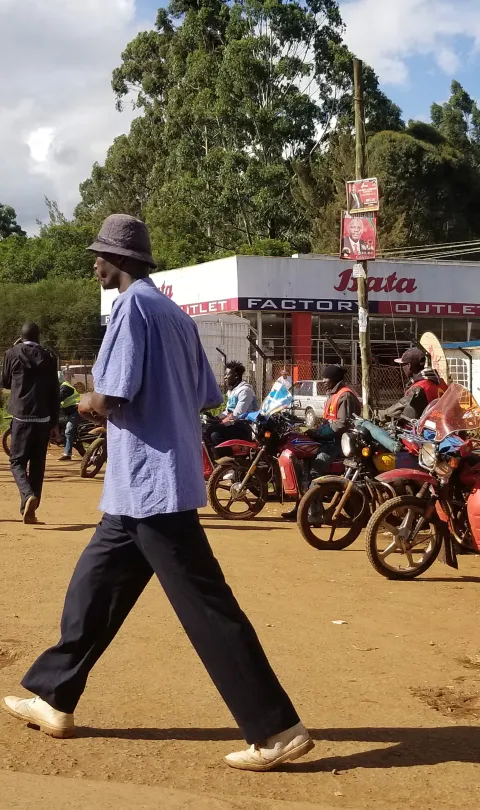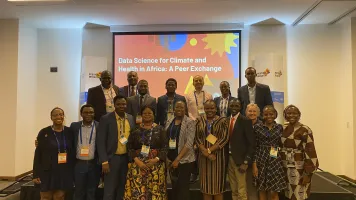
The morning sun struggles to pierce Nairobi’s haze as John Kamau, a boda-boda rider, revs his engine through thickening traffic. Around him, the city pulses with construction cranes and the acrid tang of exhaust. "I used to blame the dust for my cough," he says, adjusting the rag over his nose. "Now the doctor says it’s the air, full of poison." Nairobi’s skyline may gleam with progress, but its unchecked urbanization hides a deadly cost: soaring cancer rates and stolen breaths. As Kenya’s cities expand at breakneck speed, a critical question emerges: Can development come without destruction?
Stories like John’s remind me of the urgency of my work all over again. As a Data Scientist and Research Fellow with the Africa Climate and Health Data Capacity Accelerator Network (CAN), my mission is to connect the dots between climate, health, and urbanization using data. But some days, the dots connect themselves.
The hidden health toll
My work is grounded in numbers, but those numbers tell deeply human stories. While researching for my CAN project, I stumbled on some shocking statistics. Nairobi’s air carries a dangerous cocktail: PM2.5 particles from traffic, benzene from factories, and heavy metals from burning waste, all invisible threats with visible consequences. In neighborhoods like Industrial Area and Dandora, where smokestacks tower over homes, residents breathe air that exceeds WHO safety limits by 400%, turning daily commutes into health hazards. The toll is staggering. According to WHO, lung cancer rates have surged 25% in a decade, while clinics report endless queues for asthma and COPD treatments.
Informal workers, such as street vendors and boda-boda riders, inhale toxins for 12 hours a day, and their medical bills outpace their wages.
"We’re treating pollution, not just patients," says Dr. Amani from Kenyatta National Hospital, where respiratory cases have tripled in five years. Nairobi’s PM2.5 levels now rival Delhi’s and Accra’s, but with far fewer interventions.
This is not just urban decay. It is a public health emergency disguised as progress.
John Kamau wakes each morning with the taste of metal in his mouth, a bitter reminder of yesterday's exhaust fumes. At Kenyatta Hospital, the X-ray of his lungs shows ominous shadows. "The doctor says fifteen years of Nairobi's air did this," he rasps, flexing fingers that once gripped handlebars with ease. His boda boda now gathers dust as medical bills pile up.
Note: John Kamau is a composite character, drawing from multiple real-life accounts of Nairobi’s boda-boda riders to illustrate broader health risks faced by informal workers.
Connecting to global patterns
Nairobi's toxic air mirrors a deadly global pattern. Like Delhi's winter smog and Lagos's fuel-choked streets, Kenya's capital joins cities where progress and pollution go hand in hand. The WHO estimates 9 in 10 urbanites worldwide breathe unsafe air, with low-income communities bearing the worst toll. From Mexico City's ozone alerts to Jakarta's emergency pollution masks, the symptoms are identical: rising cancer clusters, children's stunted lungs, and a cruel choice between jobs and health. Kenya's crisis reflects a universal truth. Unchecked urbanization is writing the same tragic story across continents, with only the street names changed.
The path forward: Grassroots data for systemic change and youth-led innovation
In 2022, the Kenya Climate and Air Quality Network (KCAQN) partnered with Sensor.Africa to deploy 12 low-cost AirQo sensors in Mukuru kwa Njenga. The findings were stark: PM2.5 levels exceeded WHO limits by 500% during school rush hours. These results were peer-reviewed and published in the journal. In response, the Nairobi County government adjusted garbage collection times and installed dust-suppressing barriers, as documented in the Nairobi City County Air Quality Action Plan.
Meanwhile, the Kenya Medical Research Institute (KEMRI) found that droughts increase PM10 levels by 40% in informal settlements due to dust, while floods trigger waste burning that releases benzene above WHO safety limits (Kenya Ministry of Health Circular No. 12/2023). However, youth groups are stepping in. The Mukuru kwa Reuben Green Initiative planted 1,200 drought-resistant trees in 2023, reducing dust pollution by 18% (KCAP Monitoring Report, 2023). KCAQN also uses NASA satellite data via the Black Marble Project to send SMS alerts on high-pollution days, allowing communities to take early precautions.
To monitor carbon emissions more accurately and inform environmental policy, a CAN Fellowship cohort 1 fellow developed a carbon emissions estimation model for Kenya’s transport sector. Using high-resolution GPS, traffic, and fuel consumption data, the project uncovered critical insights into urban mobility emissions, enabling more sustainable transport planning and policy. As a fellow from cohort 2 of the same initiative, I see how these efforts form part of a growing ecosystem of local data leadership tackling complex urban challenges.
As activist Wanjiru Mwangi explains: "We’ve installed 100 air filters in Mukuru schools, but we need policy teeth."
A blueprint for change
Cities like Bogotá and Copenhagen show what’s possible. Nairobi could:
- Enforce Euro 4 fuel standards
- Expand the Bus Rapid Transit (BRT) network
- Convert dump sites like Dandora into urban green zones
- Tax polluters for real-time emissions
- Redirect road budgets toward safe pedestrian infrastructure
- Mandate 30% tree cover in all urban plans
We have the tools, data, local leadership, and successful pilots. Now we need the will to scale them.
With 10,000 pollution deaths yearly, Kenya can't afford incremental change. The next time you see a boda rider coughing through traffic, ask: Whose lungs will pay for progress tomorrow?

